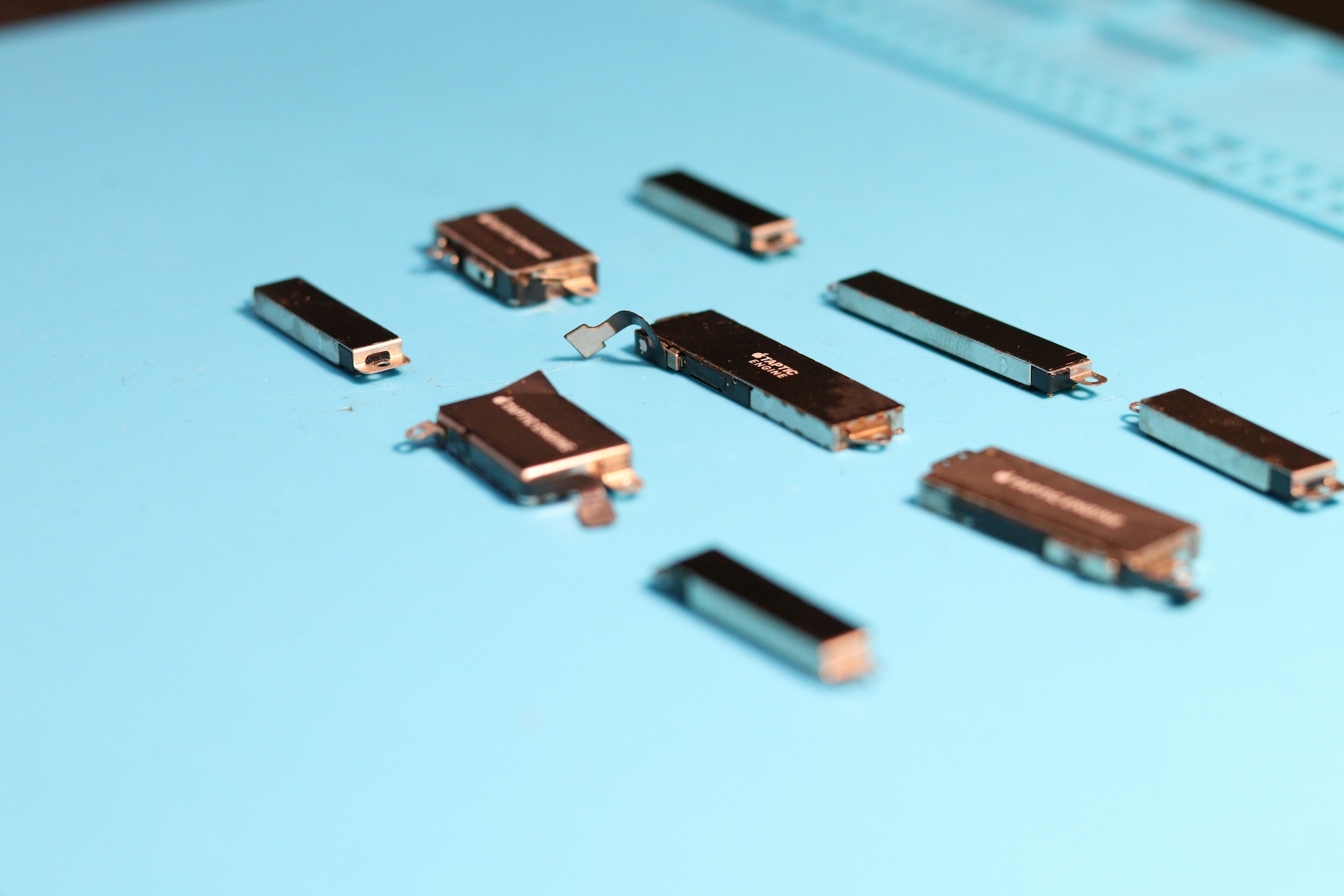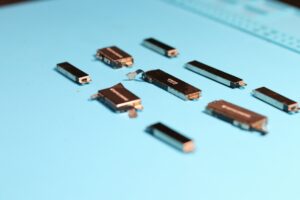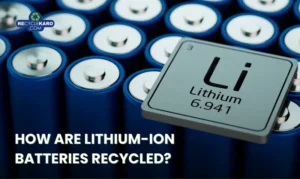Exploring the Power of Neodymium Magnets

Neodymium magnets are a marvel of modern engineering. Known for their incredible strength, they are the strongest permanent magnets available today.
These magnets belong to the rare earth magnet family, which includes other powerful magnets like samarium cobalt. Composed of an alloy of neodymium, iron, and boron, they have revolutionized many industries since their development in the 1980s.
Their high magnetic strength and resistance to demagnetization make them indispensable in various applications. From electronics to renewable energy, neodymium magnets play a crucial role in advancing technology.
Despite their strength, they are surprisingly compact, making them ideal for miniaturizing devices. Their versatility and power have made them a staple in both industrial and consumer products.
In this article, we will explore the fascinating world of neodymium magnets, uncovering their properties, uses, and benefits.
What Are Neodymium Magnets?
Neodymium magnets are a type of rare earth magnet. They stand out for their exceptional magnetic strength and versatility. As permanent magnets, they retain their magnetic properties over time without needing a power source.
These magnets are primarily composed of neodymium, iron, and boron. This specific combination gives them their powerful magnetic force. Introduced in the 1980s, neodymium magnets have become essential in various industrial and consumer applications.
To classify these magnets, they are categorized by grades. These grades indicate differences in strength and temperature tolerance. Here are a few key points about neodymium magnets:
- Strongest type of permanent magnet available
- Composed of neodymium, iron, and boron
- Classifiable by different grades, such as N35, N42, and N52
Due to their compact size and strength, these magnets are crucial in developing smaller, efficient electronic devices. This characteristic makes them favorable in many cutting-edge technologies and industries. Neodymium magnets have undeniably transformed our world, bringing efficiency and innovation to the forefront.
The Science Behind Neodymium Magnets: Composition and Properties
Neodymium magnets are famed for their unparalleled strength. They owe this prowess to their unique composition: an alloy of neodymium, iron, and boron. This combination creates a magnet that’s several times stronger than traditional magnets.
The production of neodymium magnets begins with mining rare earth elements. These include neodymium, which belongs to the lanthanide series on the periodic table. After extraction, these elements undergo a series of refining and alloying processes to form the powerful magnets we use today.
Several key properties define neodymium magnets:
- High Magnetic Strength: Their strength outshines that of any other permanent magnet.
- Resistance to Demagnetization: Even under external magnetic fields, they maintain stability.
- Brittleness: Despite their strength, they are prone to chipping.
These properties contribute to their wide-ranging applications. Neodymium magnets are indispensable in the miniaturization of modern electronics. They enable the creation of smaller, more efficient devices without compromising performance.
In essence, the science behind neodymium magnets is a result of advanced metallurgy. Their robust properties continue to push boundaries in technology and industry. As we delve deeper into their uses, it becomes clear that these rare earth magnets are more than just powerful—they are essential.
Types and Grades of Neodymium Magnets
Neodymium magnets come in various types and grades, tailored for specific needs. These variations offer different levels of strength and temperature resistance. Understanding these distinctions is crucial for choosing the right magnet for your project.
Grades in neodymium magnets reflect their maximum energy product, denoted as an “N” number. Common grades include N35, N42, and N52. As the number increases, so does the magnetic strength. N52 magnets, the strongest, are often employed in high-performance applications.
Different types of neodymium magnets are defined by their structural variations:
- Disks: Flat and round, suitable for audio equipment.
- Cylinders: Used in motors and sensors.
- Blocks: Widely used in construction and industrial applications.
- Rings: Fit for use in jewelry and scientific instruments.
Each type offers unique advantages and limitations, depending on the application. For example, ring magnets are preferred for applications requiring a central gap for wiring.
Selecting the correct type and grade ensures optimal performance and longevity. It’s vital to consider both the operational environment and the specific requirements of the task at hand.
Neodymium Magnet Strength: How Strong Are They?
Neodymium magnets are renowned for their exceptional strength. As part of the rare earth magnet family, their strength surpasses that of most other magnets. This makes them highly sought after for many demanding applications.
The strength of neodymium magnets lies in their composition of iron, neodymium, and boron. This combination results in a powerful magnetic force. Unlike traditional magnets, neodymium can attract objects from a significant distance and maintain a strong hold.
To quantify their strength, neodymium magnets are measured in terms of their maximum energy product, expressed in Mega-Gauss Oersteds (MGOe). Strong neodymium magnets typically range from 30 to 52 MGOe, indicating a very high magnetic energy.
Benefits of Their Strength:
- Compact Size: Smaller magnets can provide the same force as larger conventional magnets.
- Versatile Applications: Ideal for various industries, from electronics to medical.
- Efficient Power: Enhances the performance of electric motors and other devices.
This extraordinary strength makes them a staple in cutting-edge technology and innovation. From holding up heavy objects to powering complex machines, the power of neodymium magnets is undeniably impressive. Their capability to maintain this strength over time solidifies their role in numerous sectors.
Key Benefits of Neodymium Magnets
Neodymium magnets offer remarkable advantages due to their strength and versatility. They are essential in shrinking the size of devices without compromising performance. Their miniaturization benefits facilitate advancements across various sectors.
These magnets play a critical role in enhancing the performance of modern technologies. From efficient electric motors to high-fidelity speakers, their influence is vast. Their ability to maintain strong magnetic fields makes them indispensable.
Main Benefits Include:
- High Strength: Greater magnetic strength than conventional magnets.
- Size Efficiency: Enable compact device designs.
- Durability: Long-lasting with minimal deterioration over time.
Additionally, the energy-efficient technologies supported by neodymium magnets contribute to environmental sustainability. They are integral to developing greener solutions such as electric vehicles and wind turbines. As demand for efficient technologies grows, the benefits of neodymium magnets continue to attract global attention.
Common and Innovative Applications of Neodymium Magnets
Neodymium magnets serve a wide array of uses, thanks to their unmatched strength. Traditional applications include electronics and various consumer products. They are key components in hard disk drives and headphones.
In the medical field, these magnets are critical. They power MRI machines and numerous diagnostic tools. Their precision and reliability make them ideal for life-saving technologies.
Traditional Applications:
- Hard Disk Drives
- Loudspeakers
- Magnetic Fasteners
- Electric Motors
Innovative uses of neodymium magnets push the boundaries of technology. They are essential in renewable energy. Neodymium magnets enable the efficient operation of wind turbines and electric vehicles.
Neodymium magnets also play a key role in advanced robotics. Their ability to maintain strong magnetic fields enhances automation. From levitating trains to solar panels, their potential seems endless.
Cutting-edge Applications:
- Wind Turbines
- Electric Vehicles
- Advanced Robotics
- Magnetic Levitation Trains
The blend of common and new applications demonstrates the magnet’s versatility. As technology evolves, neodymium magnets continue to inspire innovation. Their use is crucial in developing more sustainable, efficient solutions across industries.
Safety and Handling Precautions
Neodymium magnets, while useful, require careful handling. Their strong magnetic fields can pose risks. It is crucial to follow safety guidelines to prevent accidents.
Strong magnets can affect electronic devices. Keep them away from sensitive items like credit cards and pacemakers. Their attraction force can cause injuries if fingers get trapped.
Handle these magnets with care to avoid chipping or breaking. Consider using protective gear. This helps in handling them safely and reduces potential harm.
Precautionary Measures:
- Keep away from electronic devices
- Use protective gloves
- Avoid direct contact with sensitive medical equipment
By observing these precautions, you ensure both user safety and the longevity of the magnets. Proper handling minimizes the risk of damaging surfaces and maintains their functionality.
Longevity and Care: How Long Do Neodymium Magnets Last?
Neodymium magnets are renowned for their durability. When maintained well, they can last for decades with minimal strength loss. Their longevity depends on several factors, primarily storage and usage conditions.
Proper storage is essential. Keep them away from high temperatures and humidity. Such environments can cause rapid demagnetization or corrosion over time. Protective coatings like nickel or zinc can help prevent these issues.
Regular care extends their life significantly. Clean them gently with a soft cloth to remove dust or debris. Ensure to store them separated, preventing unwanted attraction or damage.
Longevity Tips:
- Avoid high temperatures
- Keep dry and clean
- Use protective coatings
By following these practices, you ensure neodymium magnets maintain their powerful performance for years. Careful attention to storage and handling keeps them functioning efficiently across applications.
Why Recycle Neodymium Magnets? Environmental Impact and Sustainability
Neodymium magnets contribute significantly to sustainable technology. They play a crucial role in clean energy solutions, such as wind turbines and electric vehicles. This use enhances energy efficiency and reduces carbon footprints.
However, their production poses environmental challenges. Mining rare earth elements affects ecosystems and consumes energy resources. Proper regulations and advancements in mining techniques can mitigate these effects.
Recycling neodymium magnets presents an opportunity to boost sustainability. It helps conserve resources and lowers environmental strain. Efforts to recycle and reuse rare earth materials are gaining momentum, fostering a circular economy.
You recycle neodymium magnets to secure supply chains and cut environmental harm from mining. Mining releases 1 ton of toxic sludge per ton of rare earths, polluting water in 70% of sites. Recycling uses 35% less energy than virgin production.
India imports 100% of its neodymium needs, costing ₹5,000 crore yearly. The National Critical Minerals Mission (2025) incentivizes recycling to meet EV targets. Recyclekaro complies with E-Waste Rules 2022, ensuring zero landfill for your magnets.
Automobile companies, EV companies, and magnet manufacturers can buy neodymium oxide from Recyclekaro to meet India’s 20% recycled content mandate by 2027.
Sustainability Strategies:
- Enhance recycling initiatives
- Implement eco-friendly mining
- Develop efficient production methods
These steps can lead to more sustainable practices and a reduced environmental impact.
Recycling yields high-purity neodymium oxide for new strong magnets, reducing costs by 20-30%.
“Recycling neodymium magnets cuts CO2 emissions by 90% versus mining.”
Experts like Dr. Osamu Takeda from Tohoku University state,
How Does Recycling Benefit India’s EV Sector?
India’s EV sales hit 2 million in 2025, needing 10,000 tons of neodymium magnets yearly. Recycling supplies 15% of this domestically by 2030. You save on powerful magnet prices, now ₹1,500/kg recycled versus ₹2,000/kg imported.
Regulations under Batteries Rules 2022 mandate 20% recycled content in EV motors by 2027. For manufacturers, this lowers tariffs on raw imports.
What Environmental Risks Do Unrecycled Neodymium Magnets Pose?
Landfilled neodymium magnets leach heavy metals into soil, contaminating 40% of groundwater in unmanaged sites. Incineration releases dioxins, harming air quality. Recycling at Recyclekaro avoids these by processing 100 tons monthly without emissions.
The Future of Neodymium Magnets
Neodymium magnets hold a prominent place in modern technology. Their unmatched strength and versatility drive innovation across many fields, from electronics to renewable energy. As demand for sustainable solutions rises, these magnets will become even more crucial.
Future advancements promise to enhance their capabilities further. Research focuses on improving performance and reducing environmental impact. Efforts in recycling and new applications could increase their sustainability and efficiency.
Neodymium magnets will continue shaping industries and technologies. Their role in promoting a greener, more efficient world remains vital. As industries evolve, the utility of these powerful magnets will expand, driving progress and innovation into the future.





You can find all the useful information you need on the Vavada mirror. Find out why players switch to the official Vavada website via the mirror, and discover the benefits: similar registration and login processes, bonuses, promo codes